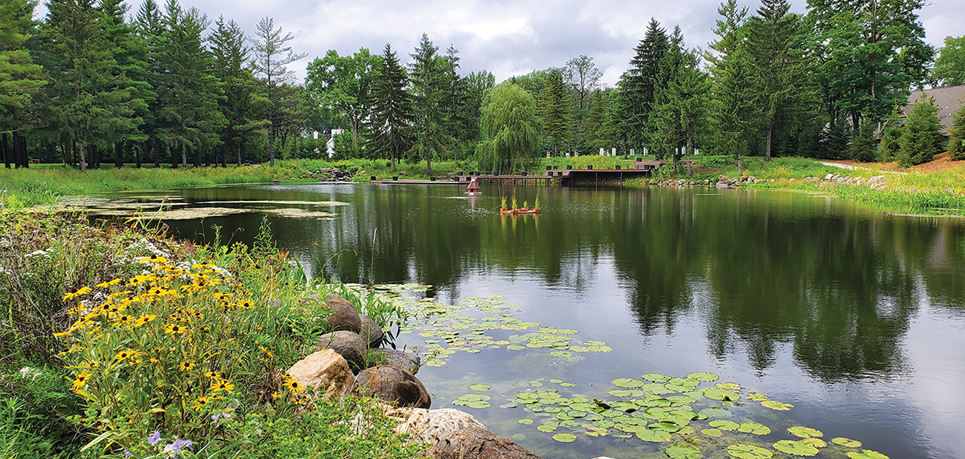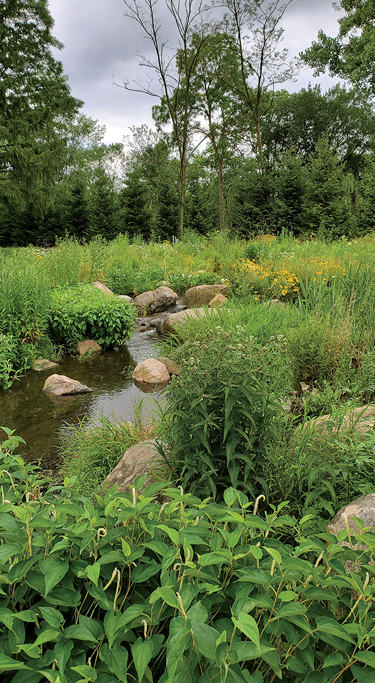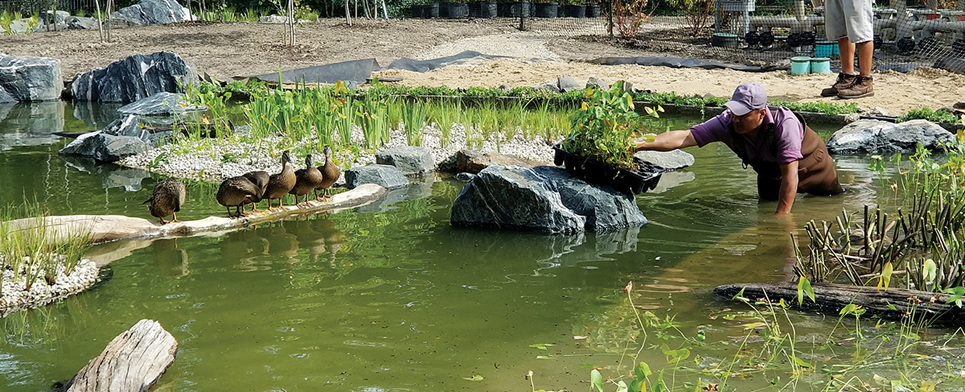
When I began my career more than 35 years ago, little information existed about most things aquatic compared to today. Instead of being just a click away, information about individual plants was typically provided via a photocopy through the mail. I would send a check to cover the cost (about 7 to 10 cents per copy) for plant information selected from a hand-typed list of documents of individual plants.
>> Related Article from Kelly Billing | Variegated and Colored Foliage for Water Gardens

These tidbits of information were largely available from Walter Pagels, the former International Waterlily and Water Gardening Society (IWGS) librarian for decades. Pagels was also a world traveler, bringing new plants to the United States and sharing them with many along the way. The hand-typed, black-and-white IWGS Journal was also a much sought-after source of new plant knowledge. The IWGS still maintains a library of books, articles and publications via David Curtright. If you are in need of specific information about an individual plant, you can certainly find it there.
Why would I go through all this trouble? I have long been an advocate — and owner of Water Becomes Garden — of incorporating plants into all water features, because there is nothing else out there that can improve water quality, enhance the ecosystem and add stunning beauty to the landscape. It has, however, been an uphill battle.
In the earlier days, most nurseries were selling locally only or bare-root through the mail. Mesh baskets were the norm, typically with oozed roots and mud. They were unstable and often fell over. Bare-root plant quality and size consistency were lacking. In the mid-to-late-80s, several aquatic plant enthusiasts blossomed into more traditional growing operations for aquatic plants. The goal was to meet the needs of a growing industry and make aquatic plants more mainstream. Distributing plants by truck to get them into garden centers and consumers’ backyards would foster the love of this special category of plants.
Changes in growing methods and the introduction of no-hole containers enhanced the ability to transport plants to arrive as a cleaner, more retail and landscape-friendly product. All these processes led to an increased market share for waterlilies, lotus and other aquatic plants.About 15 years ago, I gave a presentation at a program for pond builders and queried the group of 150 about their use of plants in pond builds. Only 10 contractors were using them at that time — a surprisingly small number! Lack of knowledge and understanding was the noted cause for their hesitation. I am of the philosophy that you don’t start out knowing all the aquatic plants. Start with a few. Get to know them and use them appropriately. Build from there or hire a professional to help you with your plant selection.
The Information Age
More recently, plant usage is up! Now that information is widely available, interest in the aquatic plant hobby is growing significantly worldwide. New waterlilies and lotus cultivars are being created at a rapid pace. Color, flower shape and foliage variations abound. A new database has evolved on the IWGS website (www.iwgs.org). The choices available today can be daunting but are also incredibly exciting. It is still collective knowledge and through trial and error that most cases can be made for which plants are the best choice in certain situations. Experience in the “getting to know each other” phase matters.

More and more contractors are using plants in their projects, and some are taking it to the next level. Large-scale projects require large-scale plantings. Shy or underplanted projects will face challenges with water quality. All too often, large water bodies have plants in pots that are inadequate for long-term health. Large planting beds allow the plants to prosper with little maintenance. Small spaces have criteria, too. It is always about knowing the right plant for the right place.
Related Content | 2019 IWGS New Waterlily Competition Results
no images were found
The planting areas should be appropriate for the overall scale of the project, but they should also be incorporated into areas where moving water will enhance their ability to uptake nutrients and balance the ecosystem. When naturalized areas are planned properly and become established, they support a much more diverse network in the food chain. To name a few, fish have fry; frogs and tadpoles have habitat; and dragonflies are abundant.
Tailor Your Knowledge
Every client has their own personality and wish list. That personality, along with the space and budget, dictates the scale and scope of the project. No matter how you acquire your plant knowledge, the suitability of the plants and their overall influence on the project are key to success. Knowing which plants are going to provide the elements needed to satisfy the client’s end goals is critical.

These projects are merely a taste of the diversity encountered from client to client. All of them use plants in different applications to ensure beautification and long-term consideration of water quality. Various methods of circulation are implemented in each of these projects to enhance and improve the efficiency of plants to maintain their respective environments. Special thanks to Larry Carnes for sharing some of these lovely waterscapes.


